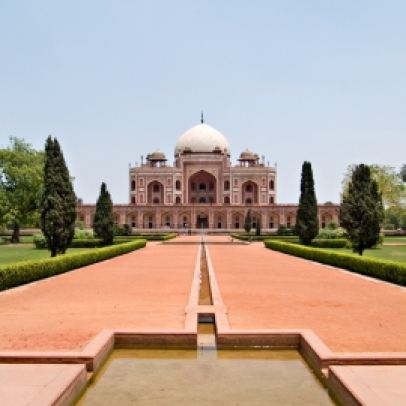Delhi is one of the oldest cities in India. Today, it serves as the capital and the economic hub of the nation.
The legend says,
Delhi was formerly the city of Indraprastha, a utopian city founded by the Pandavas. It is referenced in the Mahabharata, a Sanskrit Indian text compiled over a period of 800 years from around 400 BCE.
The settlers first inhabited the region in 2nd Century BC. It was first built as a city with royal complex by the Emperor Shahjahan in 1639 and was known as Shahjahanabad. Today, the region is popularly known as ‘Old Delhi.’ Over the last twenty centuries, the city has been ransacked and rebuilt hundreds of times. Mongols, Persians, Turks, Pashtuns and the British, have ruled over this small city over a long span of time. You can enjoy the tour of Delhi, along with its historical sister regions; Agra and Rajasthan, in the Golden Triangle Tour.
A historically and culturally rich city, it was also mentioned in the travelogue ‘City of Djinns’ by the popular author William Dalrymple. Let’s take a look at the 5 marvels of Delhi!
Red Fort (Lal Qila)
Red fort is a fort or palace built by the Mughals in the 16th century, and it served as the residence and political center of the Mughal era. Built in 1648 by the Emperor Shahjahan, the entirety of the fort is based on red sandstone.
Bahadur Shah Jafar, the last of the Mughal rulers, was confined in the palace. His empire lasted only for a short time and was limited to the premises of the fort. He left the fort to the British in 1858. Today it serves as the major tourist attraction of the city.
Jama Masjid (Mosque)
Jama Masjid is the largest mosque in India located in Old Delhi. It was built by the Emperor Shahjahan between 1644 and 1656 at the cost of Rs. 1,000,000. The mosque was completed with three great gates, four towers and two 40 meters high minarets constructed of strips of red sandstone and white marble. The large courtyard can accommodate more than 25,000 persons.
The mosque is a site to see during the Friday prayers and Eid-ul-fitr. It is a popular tourist site today, with thousands of tourists flocking in every year to admire the Mughal architecture.
Humayun’s Tomb
Humaun’s tomb is a grand mausoleum dedicated to the second Mughal Emperor Humayun. It was commissioned by Akbar the Great in 1569-70 and had used massive amount of red sandstone. It was the first of its kind in the Indian subcontinent!
The site was inscribed into UNESCO Heritage Sites in 1993. The tomb, which costed Rs. 1,500,000 to build, doesn’t only house the tomb of Humayun but many other Mughal royals. It is one of the finest example of Persian and Islamic architecture in India.
Chandni Chowk
Chandani Chowk is the oldest and one of the busiest markets in Delhi. The market was established during the time of Shajahanabad’s foundation. It served as the central market and carried royal processions as well. Even though, the market doesn’t resemble its old style and traditions anymore, it still serves as the major market for the inhabitants of Old Delhi.
It is also known for its cuisines and delicacies. Most tourists visit the place to relish the local delicacies which derived mainly from the Muslim household.
Qutub Minar
Qutub Minar is the tallest brick minaret in the world. The 72 meters tower dominates the local landscape of Delhi. It was constructed by the Delhi Sultanate Qutub al-Din Aibek in 1200 AD. Later, more storeys were added to the complex by his heir.
It was inscribed in UNESCO Heritage Site in 1993, along with the surrounding historical monuments. Many of these surrounding monuments predates the foundation of the Minar and has Sanskrit scriptures on it.









